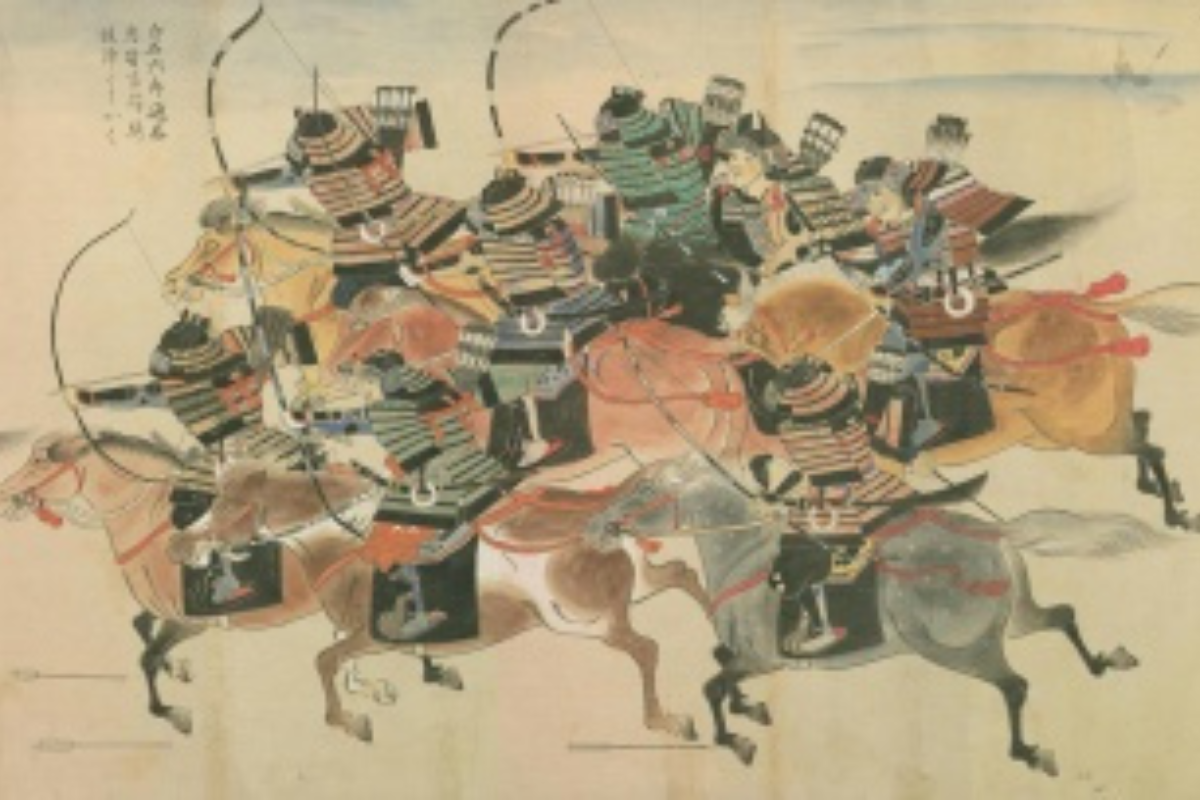
eLibrary: Mongol Invasion of Japan
In the 13th century, the Mongols launched two invasions of Japan—both repelled by typhoons later called kamikaze, or “divine winds.” This exhibition explores the legend and reality through three lenses: an eyewitness scroll from the 1200s, 19th-century prints glorifying the storms, and underwater archaeology revealing what remains of the Mongol fleets today.
This is the latest version of an electronic library of resources supporting the exhibition. It offers free and immediate access to online resources for anyone wanting to explore further the context of the museum’s artifacts. As the museum develops, more resources, in more languages, will be added.
NOTE: Some of these links come from Academia.edu and Researchgate.net. These require a free one-time registration. To research further yourselves, you may consider registering with Jstore.org which gives limited but free monthly access to its collections
Articles
Adams RF. Outfought and Outthought: Reassessing the Mongol Invasions of Japan. MA thesis US Army Command and General Staff College; 2009 123pp.
Atsushi, I. Saved by the Wind? The Mongol Invasions of Japan, Nippon.com 23.12.2021
Chase, K.W., 1997. ‘Mongol Intentions towards Japan in 1266: Evidence from a Mongol Letter to the Sung’, Sino-Japanese Studies Journal, 9(2), p.13.
Cheng, G., 2022. ‘The Influence of Mongol Invasion in the Kamakura Period on the Recession of the Kamakura Shogunate’, Asian Journal of Social Science Studies, 7(7), p.56.
Choi, L. and Yi, S.H., 2021. ‘Forced Self-Reliance: The Kamakura Bakufu Defense against the Mongol Invasion of Japan’. Journal of Interdisciplinary History, 52(2), pp.177-196.
Conlan, T.D., 2013. ‘Myth, Memory and the Scrolls of the Mongol Invasions of Japan’ in . Archaism and the Antiquarianism in Korea and Japanese Art, Chicago: Center for the Art of East Asia, University of Chicago and Art Media Resources, pp.54-73.
Fröhlich, J., 2013, September. ‘Locating history in post-war Japan: Are the Mongol invasions of 1274 and 1281 a regional, national or world historical event’, In Japanese study seminar—-Postwar, Kientzheim, France.
Fröhlich Vitale, J.,’Between Local History and National Myth: The Mongol Invasions of Japan’, in E. Krämer e.a eds Historicizing the Beyond, The Mongolian Invasion as a New Dimension of Violence, Heiselberg, 2011, 117-140.
Ghenko, The Mongol invasion of Japan, 1916, 362pp
Jōji, M. Ships on the Seabed: Searching for the Mongol Empire’s Lost Invasion Fleet, Nippon.com 17.9.2024
Jōji, M. The Battle of Bun’ei: The First Mongol Invasion of Japan, Nippon.com 20.9.2024
Jōji, M. Myth of the Kamikaze: The “Divine Winds” of the Mongol Invasion and Wartime Propaganda. Nippon.com 5.12.2024
Neumann, J., 1975. ‘Great historical events that were significantly affected by the weather: I. the Mongol invasions of Japan’, Bulletin of the American Meteorological Society, 56(11), pp.1167-1171.
Rhode, G., Mongol Invasions of Northeast Asia Korea and Japan. 39pp
Sasaki, R.J. The Origin of the Lost Fleet of the Mongol Empire PhD Thesis, Texas A&M University, 2008. 264pp.
Sasaki, R.J. ‘The Archaeological Investigation of “Kamikaze” The Mongol Invasion of Japan’
Schultz, M.J. Discarding the Mongol way of war: a geostrategic analysis of the Mongol expeditions to conquer Japan PhD Thesis, US Army Command and General Staff College, 2019, 147pp
Simpson, E.B., 2022. ‘Like a Fierce God: Reenvisioning the Enemy in the Legend of Empress Jingū in the Wake of the Mongol Invasions’, Religions, 13(8), p.695.
Świętosławski W., ‘The organization of the Mongols' war expeditions in the twelfth and thirteenth centuries’, XXXXX, 33-38.
Testa, G.A., 2020. ‘Mōko shūrai ekotoba (” Illustrated Account of the Mongol Invasions”): A Case Study of Encounter with the Other in Japan’, Eikón/Imago, 9(1).
Turnbull, S. The Mongol Invasions of Japan 1274 and 1281, Oxford 2010, 97pp
Videos
The MONGOL Invasions of JAPAN & the Origins of “KAMIKAZE” (Aniki) 21.36mins
Mongol Invasions of Japan 1274 and 1281 – Full History (Yore History) 30.44mins
